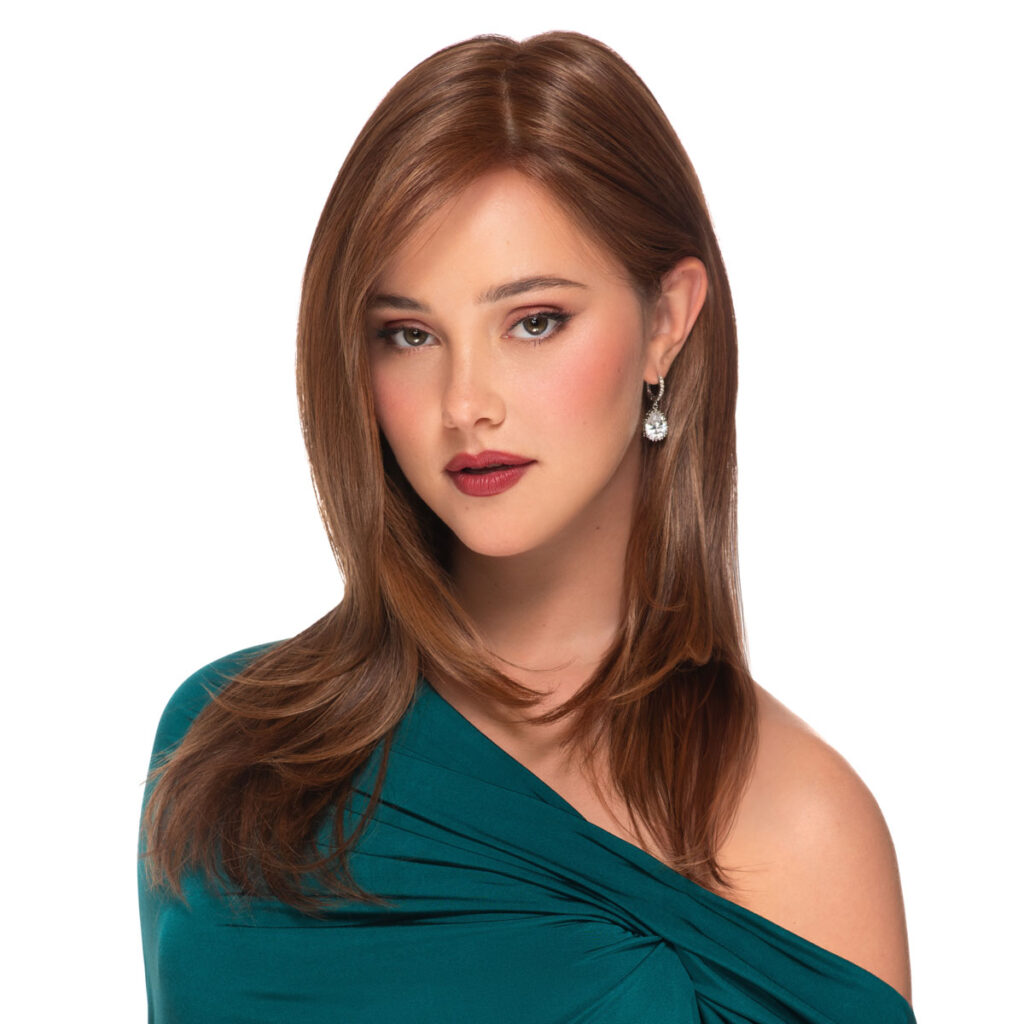Which Wig Type is Right for You?
Trying to pick your first wig—and worried about making the wrong call? You’re not alone. The truth: both human hair and synthetic can look beautiful and natural. The best choice depends on how you live, what you love, and how much time you want to spend on styling. Use the 60‑second chooser below, then follow the shopping checklist to feel confident in your cart.
The 60‑Second Wig Chooser
Choose human hair if:
- You want the most natural look up close and on camera
- You’ll wear it 5–7 days per week
- You enjoy heat‑styling or color changes
- You’re okay investing more upfront and spending 20–30 minutes on wash/style days
Choose synthetic if:
- You want ready‑to‑wear convenience with minimal styling
- Your budget is under $200–$400
- You prefer a consistent, pre‑styled look (that holds in weather)
- You’ll wear it occasionally or want fun colors without damage
Quick tie‑breaker:
- Sensitive scalp? Consider hand‑tied caps (available in both types).
- Hot/humid climate, frizz worries? Modern synthetic handles weather better.
- On camera or lots of up‑close interaction? Human hair wins for realism.
Quick Comparison Table
Feature | Human Hair Wig | Synthetic Wig |
|---|---|---|
| Look (up close) | Most natural movement and light reflection | Very natural in modern fibers; may have a slight sheen (de‑shine easily) |
| Styling | Full heat tools & color flexibility (treat like real hair) | Style is “baked in”; heat‑friendly synthetics allow low‑heat restyling |
| Convenience | Requires more maintenance and styling time | Ready‑to‑wear; minimal upkeep; holds style after washing |
| Maintenance Time | 20–30 min on wash/style days; 5–10 min refresh | 5–10 min refresh; wash less often; style springs back |
| Lifespan (regular wear) | 9–18 months with care | 3–6 months (standard); 2–4 months (heat‑friendly) |
| Cost | $300–$1,500+ | $80–$300 (standard); $120–$500 (heat‑friendly) |
| Weather Performance | Can frizz in humidity; needs anti‑frizz care | Generally weather‑proof; holds curls/styles |
| Comfort | Depends on cap; hand‑tied/mono are softest | Similar; hand‑tied synthetics are very soft and light |
| Best For | Frequent wearers, on‑camera, custom styling | Low‑maintenance daily wear or occasional switch‑ups |
“No one should spot your wig” Reassurance Box
- Hairline + part: Lace front + mono‑top create the most realistic hairline and part.
- Security: Use a wig grip band or adjustable straps for a snug, no‑slip fit.
- Density: Choose a density close to your natural hair (120–130% for daily wear).
- De‑shine: If synthetic looks too glossy in bright light, dust lightly with dry shampoo.
- Color: Pick a shade close to your brows/roots for believable realism.
The Smart Shopping Checklist
Fit and size:
- Measure head circumference at hairline, behind ears, nape, then back to start.
- Petite: ~20.5–21.5″
- Average: ~21.5–22.5″ (most women)
- Large: ~22.5–23.5″
- Try adjustable straps first; consider petite/large caps if you’re consistently outside “average.”
Cap construction:
- Lace Front: Natural hairline; great for off‑face styles.
- Mono‑Top/Mono‑Part: Realistic scalp look where you part it.
- Hand‑Tied: Each hair is knotted to soft mesh—ultra‑light, flexible, ideal for sensitive scalps and medical hair loss.
- Wefted/Open Cap: More budget‑friendly and breathable; less scalp realism.
Density and length:
- 120–130% = natural everyday; 150%+ for glam/volume or longer lengths.
- Longer lengths tangle more; consider 12–16″ for lower maintenance.
Lace and tint:
- HD lace = most invisible but more delicate; Swiss lace = more durable.
- Tint lace to match your complexion; knot‑bleach or use a lace tint spray/powder for realism.
Fiber choice:
- Human Hair (Remy preferred): Best realism, custom color, heat tools. More care/time.
- Synthetic: Pre‑styled, weather‑proof, most convenient.
- Heat‑Friendly Synthetic: Restyle at low temps, but shorter lifespan.
Security:
- Wig grip band, adjustable straps, combs/clips; lace adhesive/tape as needed.
- For no bio hair: consider silicone perimeter or medical‑grade grips.
Lifestyle:
- Gym/sweat: Lightweight synthetic or headband wigs; secure with a grip.
- Travel: Synthetic packs and bounces back best.
- Hot/humid climates: Shorter styles, lighter density, synthetic for frizz resistance.
Returns:
- Check the window and try‑on rules.
- Don’t cut lace until you’re sure you’ll keep it.
Which type of wig looks more natural?
Human hair wigs look the most natural because they are made from real human hair. They move, shine, and feel like natural hair, making them almost indistinguishable from your own. High-quality synthetic wigs can also look realistic, but they may lack the same depth, texture, and movement as human hair wigs. If you’re after a completely natural appearance, human hair is the better option.
Which type of wig is easier to care for?
Synthetic wigs are much easier to care for. They are pre-styled and hold their shape even after washing, so you don’t need to spend time styling them. Human hair wigs, on the other hand, need regular washing, conditioning, and styling, just like your own hair. If you prefer minimal maintenance, synthetic wigs are the way to go.
How long do human hair and synthetic wigs last?
Human hair wigs can last up to a year or more with proper care, making them a durable option for daily wearers. Synthetic wigs, while more affordable, typically last 4-6 months with regular use. The lifespan of both types can vary depending on how well they are maintained and how often they are worn.
Can I style both types of wigs with heat tools?
Human hair wigs can be styled with heat tools like curling irons and straighteners, just like natural hair. You can also dye them to change their color. Most synthetic wigs, however, cannot withstand heat and cannot be restyled. Some heat-resistant synthetic wigs are available, but their styling flexibility is still limited compared to human hair wigs.
Are human hair wigs worth the higher cost?
Human hair wigs are more expensive upfront, but they are often worth the investment if you want a natural look, styling versatility, and durability. They last longer than synthetic wigs and can be customized to suit your preferences. If you’re looking for a long-term solution and are willing to invest time and care, human hair wigs are a great choice.
What are the best wigs for hot or humid climates?
Synthetic wigs are typically more resistant to humidity and weather changes. They won’t frizz or lose their shape in high humidity like human hair wigs can. However, synthetic wigs can feel warmer to wear in hot weather because they are made from non-breathable fibers. Lightweight designs in both human hair and synthetic wigs can help improve comfort in warm climates.
Which type of wig is better for occasional wear?
Synthetic wigs are ideal for occasional wear. They are more affordable, require less maintenance, and come in pre-styled options that are ready to wear right out of the box. If you’re only wearing a wig now and then, synthetic wigs are a practical and budget-friendly option.
How do I decide which type of wig is right for me?
Choosing the right wig depends on your lifestyle, budget, and personal preferences. If you prioritize a natural appearance, styling flexibility, and durability, a human hair wig is a great choice. If you want something affordable, easy to maintain, and available in a wide range of colors and styles, a synthetic wig might be better. Think about how often you’ll wear it, how much time you’re willing to spend on maintenance, and how much you’re comfortable spending.






